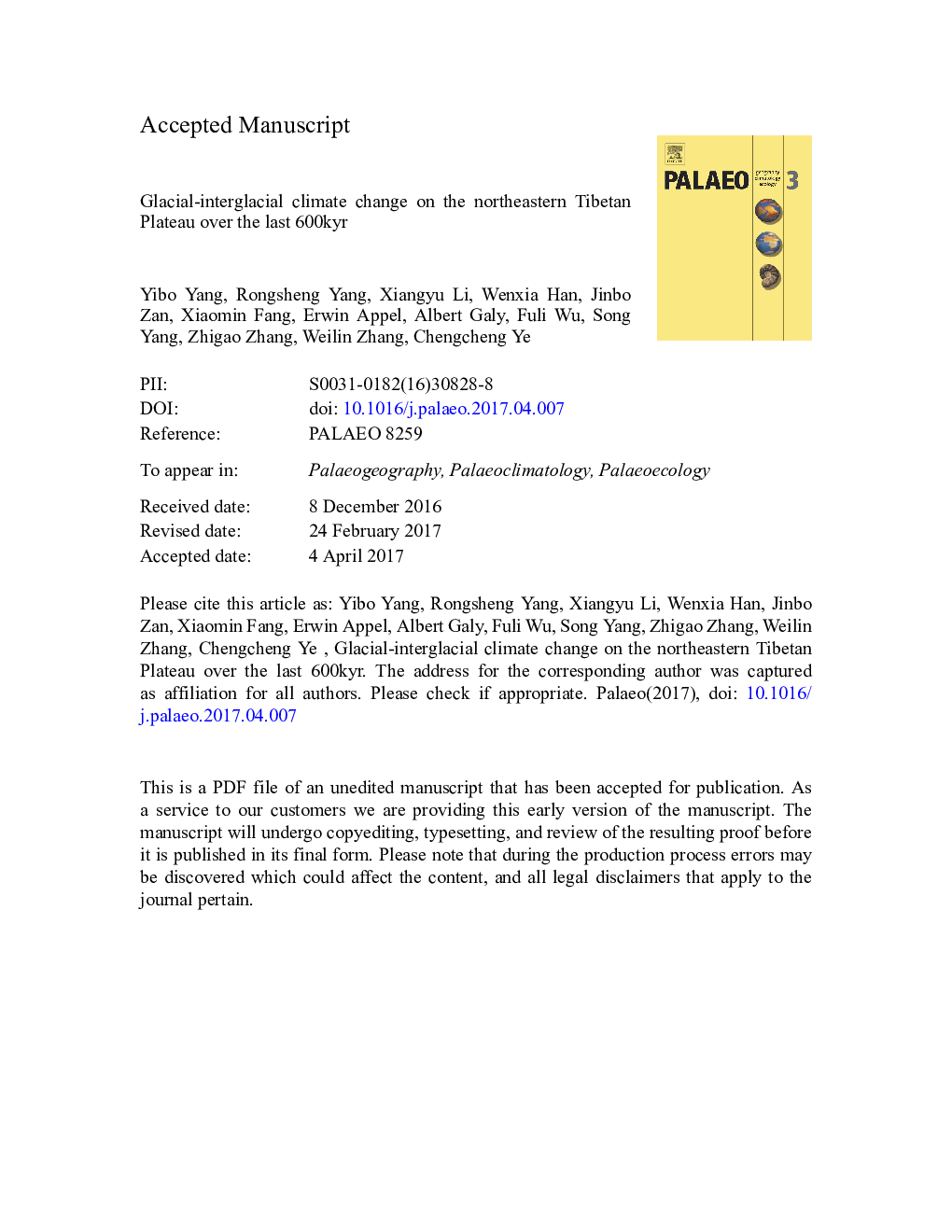| Article ID | Journal | Published Year | Pages | File Type |
|---|---|---|---|---|
| 5755894 | Palaeogeography, Palaeoclimatology, Palaeoecology | 2017 | 45 Pages |
Abstract
Exploring the interplay between the mid-latitude Westerlies and East Asian monsoon systems is crucial for revealing the mechanisms and processes behind the aridification of the central Asian interior. In this study, a high-resolution acid-dissolved Mn record of lacustrine sediments from a drilling core (SG-1) in the arid western Qaidam Basin on the northeastern Tibetan Plateau (TP) largely reveals the evolution of lake levels and climate change over the last 600Â kyr. The climate in the western Qaidam Basin shows distinct glacial and interglacial changes in accordance with changes in the global climate, and in North Atlantic sea surface temperatures (SSTs), indicating the teleconnection between the basin's climate and the North Atlantic in the form of the Westerlies. However, the basin's climate also correlates closely with East Asian Winter Monsoon (EAWM) activity as recorded by the grain size variations in loess-paleosol sequences on the Chinese Loess Plateau (CLP) over a glacial-interglacial timescale. Even during glacial periods, some relatively warm/humid stages accompanied by high paleolake levels in the western Qaidam Basin are generally conformable with relatively weak EAWM, whereas these warm/humid stages show a weak relation with the East Asian Summer Monsoon (EASM) and North Atlantic SSTs. These results collectively provide evidence that climate change in the western Qaidam Basin is, and was, not only controlled by the Westerlies, but also strongly influenced by the Siberian High, at least during glacial periods. The exact driving mechanism, however, needs to be explored further in future studies.
Related Topics
Physical Sciences and Engineering
Earth and Planetary Sciences
Earth-Surface Processes
Authors
Yibo Yang, Rongsheng Yang, Xiangyu Li, Wenxia Han, Jinbo Zan, Xiaomin Fang, Erwin Appel, Albert Galy, Fuli Wu, Song Yang, Zhigao Zhang, Weilin Zhang, Chengcheng Ye,
